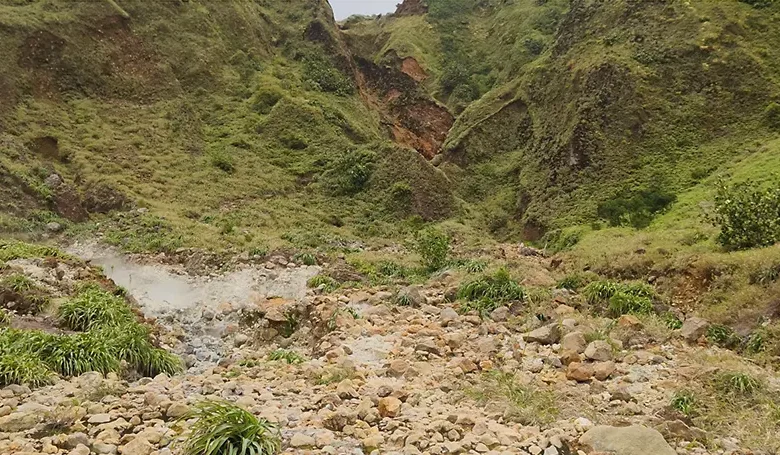Dominica’s Geological Features

Dominica’s geological features stem from its dynamic volcanic and tectonic history, giving rise to a rugged landscape of towering mountains, deep valleys, active geothermal features, and freshwater features. Dominica, located within the Caribbean’s Lesser Antilles volcanic arc, is built primarily from volcanic rocks such as andesite and rhyolite. The Morne Trois Pitons National Park, a UNESCO World Heritage site, showcases iconic features, including the Boiling Lake and Valley of Desolation. The island’s 83 rivers and volcanic landscape make it one of the most topographically diverse locations in the Caribbean.
Dominica’s Volcanic Origins and Tectonic Activity
Dominica has at least nine volcanic centres, including Morne Diablotins and Morne Trois Pitons, which form the highest elevations on the island. The volcanic nature of these peaks is visible in the form of ancient lava domes and extensive lava deposits from eruptions that took place thousands of years ago. These dormant volcanoes still contribute to the island’s geothermal phenomena. The southern volcanic complexes, such as Morne Plat Pays, frequently exhibit earthquake swarms, hinting at ongoing tectonic activity deep below the surface.
Geothermal Features and Landmarks
The Boiling Lake, located in a collapsed volcanic crater, remains one of Dominica’s most fascinating geological wonders. Its churning waters, heated by subterranean magma, represent the powerful geothermal forces at work. The Valley of Desolation, near the lake, features fumaroles and sulfurous springs, creating a landscape unlike any other. Dominica’s geothermal features, including hot springs around Wotten Waven, attract tourists and researchers alike, emphasizing the island’s reputation as a “natural laboratory” for studying geothermal and volcanic activity.
Rivers, Gorges, and Soil Composition
Dominica’s high rainfall and steep terrain give rise to a dense network of rivers that cut through mountains and form deep gorges and natural pools. The Layou, Indian, Melville Hall and Roseau Rivers serve as major waterways, supporting agriculture and providing opportunities for hydroelectric power generation. The fertile, volcanic-derived soil further supports diverse ecosystems and sustainable farming practices, integral to Dominica’s economy and environmental conservation efforts




